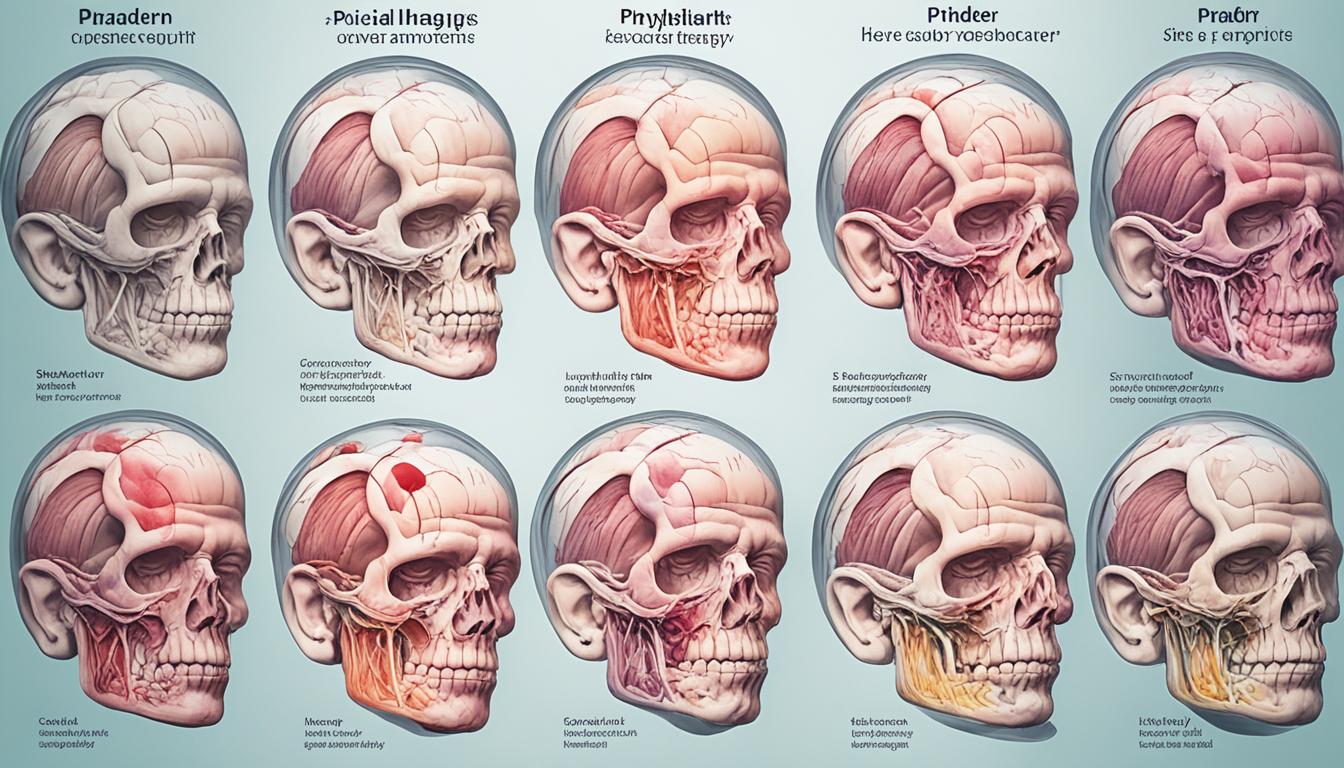Prader-Labhart-Willi Syndrome (PWS) is a rare genetic disorder. It affects individuals worldwide. People with PWS face physical, developmental, and behavioral challenges. It’s important to know the symptoms, causes, and treatments for those with PWS.
Children with PWS often have weak muscles at birth. This makes feeding hard and growth slow. They tend to eat a lot and can become extremely obese. This causes serious health issues. They also grow slowly and may find it hard to speak or learn.
People with PWS often show distinct behaviors like being stubborn, anxious, or compulsive. They might have unusual physical traits. These include being very small, having a certain face shape, eye alignment problems, and a curved spine.
The root of PWS is a problem in the DNA in a certain region of chromosome 15. This affects many genes important for growth and development. Doctors can find out if someone has PWS by looking at their DNA.
To help those with PWS, a team of experts is needed. This includes how to feed the baby, building muscle tone, and learning to move. Medicine like growth hormones can be given to help them grow. Hormones to start puberty and manage moods are also used.
Keeping an eye out for diabetes and weak bones is important for their health.
Doctors are looking for new ways to help those with PWS. One exciting idea is using stem cells. Stem cell therapy could fix the genetic problem causing PWS and lessen the symptoms.
Key Takeaways:
- Prader-Labhart-Willi syndrome (PWS) is a rare genetic disorder characterized by severe hypotonia, feeding difficulties, excessive eating, delayed development, cognitive impairment, and distinct behavioral characteristics.
- PWS is caused by abnormal DNA methylation within the Prader-Willi Critical Region (PWCR) on chromosome 15.
- Diagnosis involves DNA methylation analysis and oligo-SNP combination array (OSA).
- Management includes special feeding techniques, physical therapy, growth hormone therapy, hormone replacement, behavioral interventions, and surveillance for associated complications.
- Stem cell therapy is a potential treatment option being explored for PWS.
Genetic Basis of Prader-Labhart-Willi Syndrome
Prader-Labhart-Willi syndrome (PWS) comes from issues in the PWS area on chromosome 15. This area, 15q11-q13, is vital for PWS development. It’s maternally imprinted, which means the genes passed down from the mother are turned off.
PWS comes from three genetic issues:
- Paternal deletion – where part of the father’s chromosome 15 is absent, causing about 70% of PWS cases.
- Maternal uniparental disomy (UPD) – when one receives both chromosome 15 copies from the mother, not the father, seen in around 25% of PWS cases.
- Imprinting defect – faulty marking of genes in the PWS region. This is the rarest cause of PWS.
Genes Implicated in PWS
Many genes in the PWS area are tied to Prader-Labhart-Willi syndrome. Key genes include:
| Gene | Function |
|---|---|
| MKRN3 | Role in regulating the hypothalamic-pituitary-gonadal axis |
| MAGEL2 | Possible role in controlling circadian rhythmicity |
| NDN | May influence circadian rhythmicity |
| SNORD116 | Affects the sleep-wake cycle |
These genes affect many biological functions. When they don’t work right, they lead to PWS symptoms.
It’s key to know how these genes function. This knowledge helps us comprehend the complex pathways involved. It guides us in creating treatments for PWS.
Diagnosis and Management of Prader-Labhart-Willi Syndrome
The diagnosis of Prader-Labhart-Willi syndrome (PWS) is detailed, using DNA testing and certain clinical findings. DNA methylation testing is key, helping to find irregularities in a specific region of chromosome 15. This method uncovers the root of PWS at a molecular level, aiding in tailored care.
Management of PWS requires many experts working together. Babies may need special feeding to get the right nutrients due to challenges. Exercises help strengthen muscles and improve movement. Plus, using growth hormones can help with height and health.
As they grow, managing hormones becomes crucial to handle reproductive and hormonal changes. This ensures the right growth and maturity. Therapy and medications are valuable for dealing with the unique behaviors of people with PWS.
PWS requires ongoing checks to catch and treat health problems early, like diabetes or weak bones. Doing this can keep health issues at bay. Stem cell therapy shows promise in improving life quality for those with PWS.

